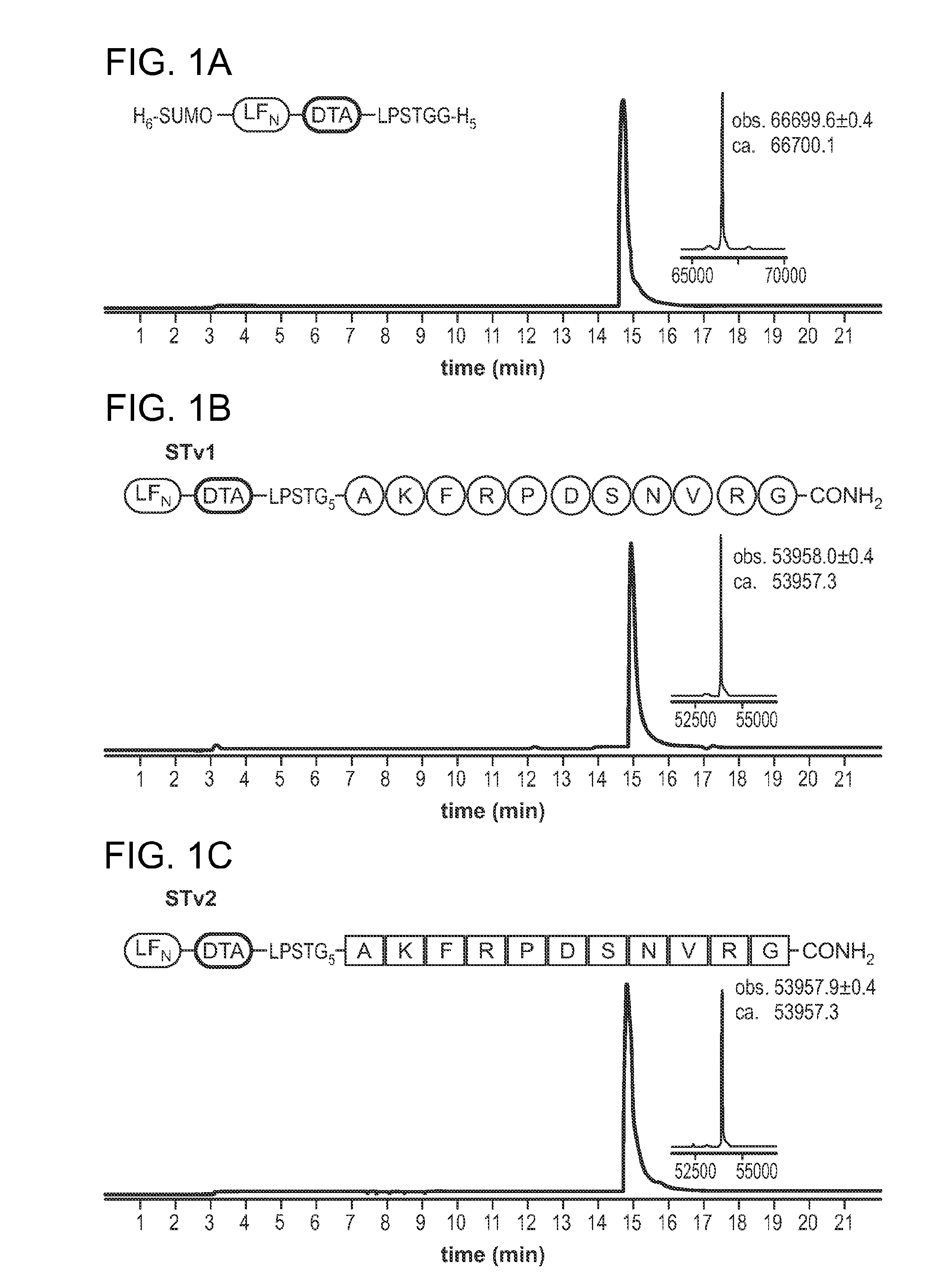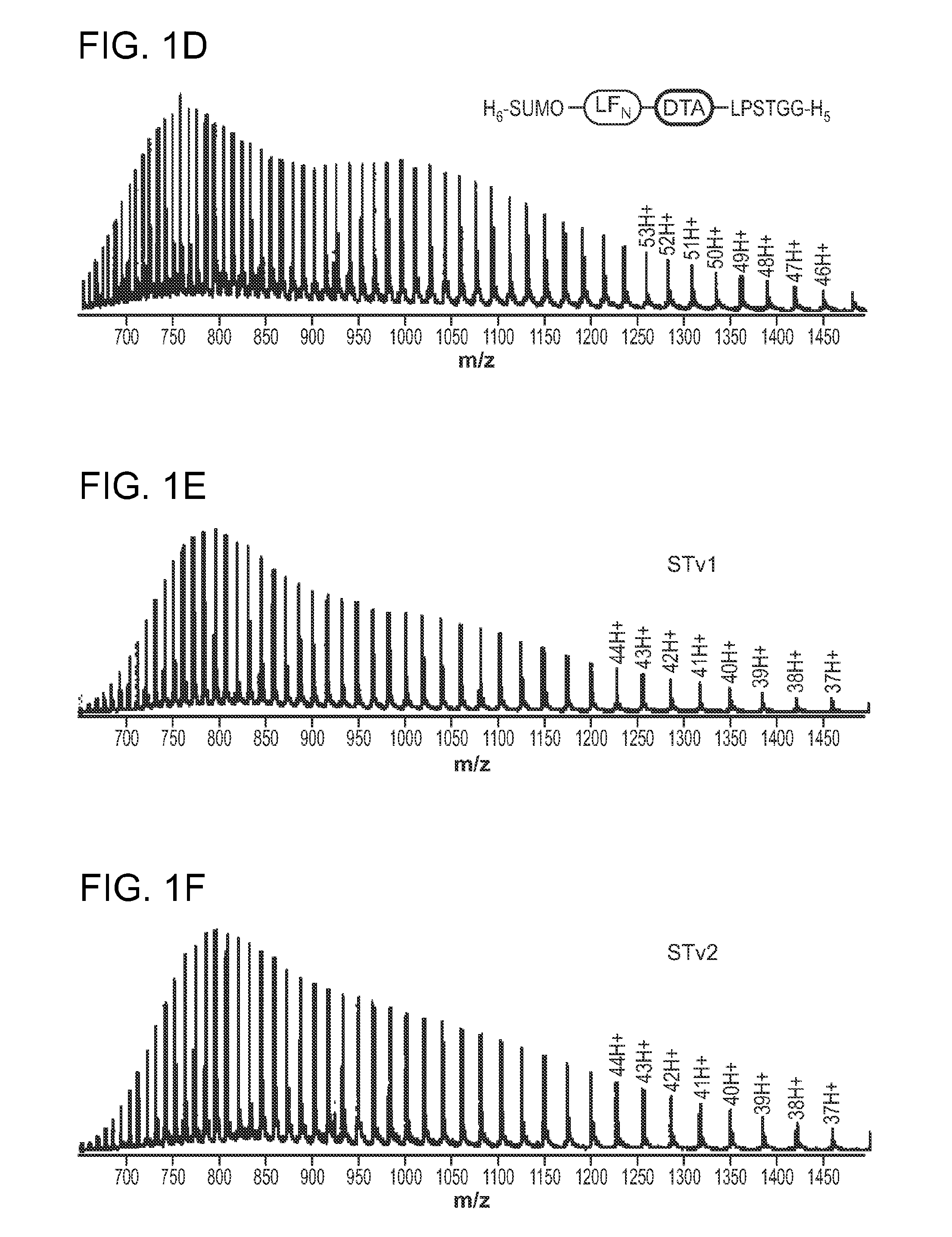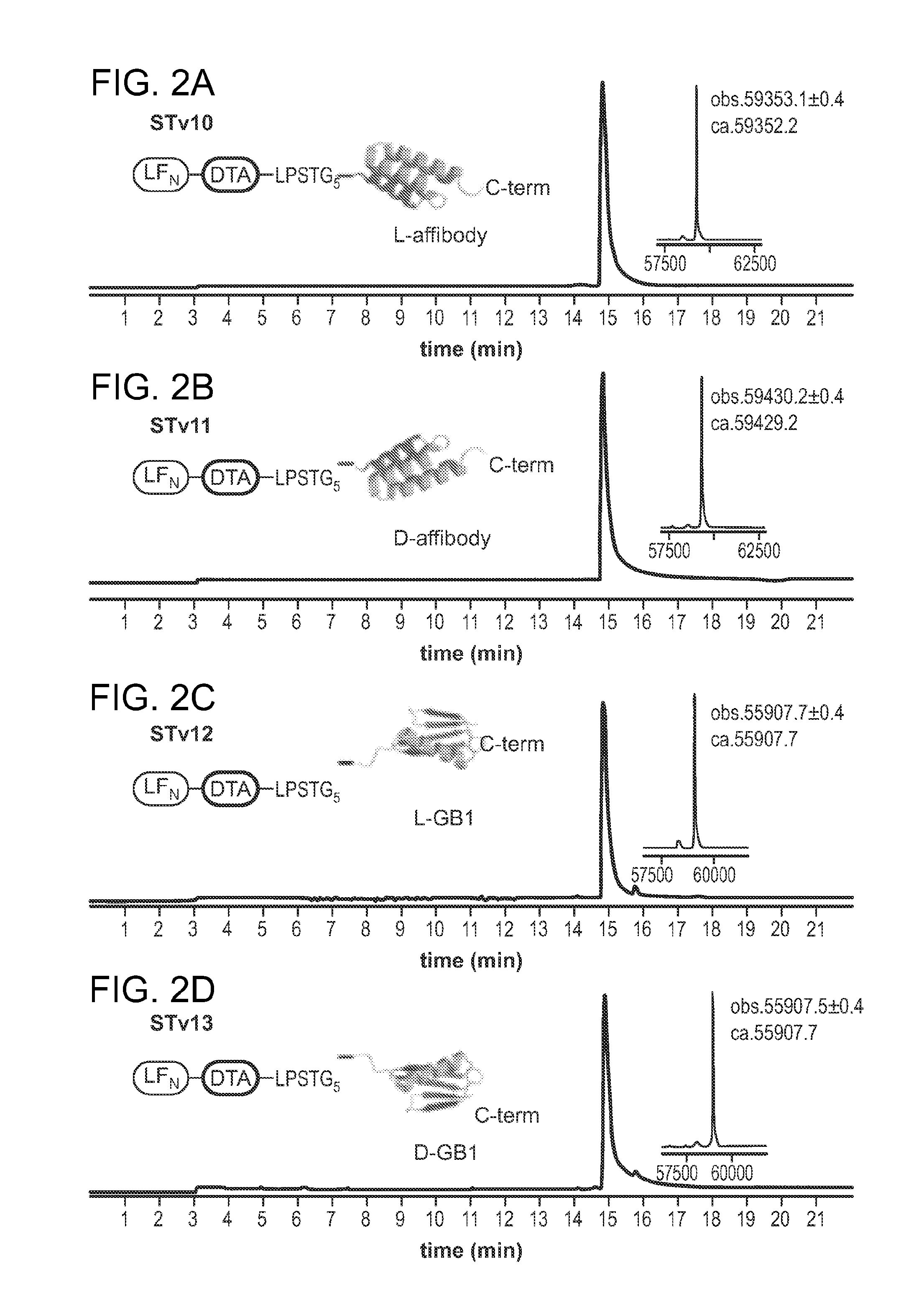Translocation of non-natural chemical entities through anthrax protective antigen pore
a technology of antigen pore and non-natural chemical entity, which is applied in the direction of peptides, organic chemistry, enzymology, etc., can solve the problems and achieve the effect of limited current technology in targeted small molecule drug delivery
- Summary
- Abstract
- Description
- Claims
- Application Information
AI Technical Summary
Benefits of technology
Problems solved by technology
Method used
Image
Examples
example 1
Preparation of Non-Natural Peptides and Proteins
[0124]First, linear peptides were prepared by Boc (tert-butyloxycarbonyl) in situ neutralization solid-phase peptide synthesis with non-natural amino acids, including D-amino acids, β-Alanine, N-methyl-Alanine, propargyl-glycine and fluorinated phenylalanine (FIG. 8). FIG. 8 shows peptide analogues used to prepare STv1-9. L- and D- cyclic peptide analogues were also prepared, this was done by way of SPPS and intra-molecular native chemical ligation (NCL). These non-natural moieties have been shown to improve a peptide's stability against proteolytic degradation, and often time increase its biological activity or provide new sites for chemical modifications.
[0125]Three model proteins were chosen for working with: affibody, protein G B1 and monobody (FIG. 9). FIG. 9 shows protein analogues used to prepare STv10-14. The small, three-helix bundle domain affibody is based on the immunoglobulin G binding domain (Z domain) of protein A, and h...
example 2
Sortagging of Peptides / Proteins to LFN-DTA
[0126]The non-natural peptides were attached to LFN-DTA in a one-pot method using SrtA* (FIG. 8). LFN-DTA-LPSTGG (SEQ ID NO: 16) was expressed as SUMO-protein fusions for higher expression yields and generation of the native N-terminus after removal of SUMO. The N-terminal SUMO tag was first removed by SUMO protease and subsequently incubated LFN-DTA-LPSTGG (SEQ ID NO: 16) with SrtA*, Ni-NTA agarose beads, and oligoglycine peptides for 30 minutes at room temperature. By simple concentration of the supernatant of the reaction mixture, we isolated the STv products in high purity, as characterized by high resolution LCMS (FIG. 1). Sortagging of the proteins to LFN-DTA followed the same method except for an extra step of gel-filtration to separate excess oligoglycine protein reactants to yield STv10-14 (FIG. 9). The highly pure LFN-DTA-protein conjugates were also characterized by high resolution LC-MS (FIG. 2).
example 3
Characterizing the Translocation Properties of STv1-14
[0127]Characterizing the translocation properties of STv1-14 into cytosol was achieved by measuring the protein synthesis inhibition in CHO-K1 cells. CHO-K1 cells were treated with STv's in the presence of PA, and then chased with Leucine-free medium supplemented with 3H-Leu. The amount of STv's delivered to the cytosol was indicated by the decrease of 3H-Leu incorporation.
[0128]The STv1-14 structures had the following sequences:
(STv1, SEQ ID NO: 17)G5AKFRPDSNVRG (all L)(STv2, SEQ ID NO: 18)G5AKFRPDSNVRG (all D)(STv3, SEQ ID NO: 19)G5(β-Ala)KFRPDSNVRG(STv4, SEQ ID NO: 20)G5(N-Me-Ala)KFRPDSNVRG(STv5, SEQ ID NO: 21)G5(proparl-Gly)KFRPDSNVRG(STv6, SEQ ID NO: 22)G5AK(Tri-Fluoro-F)RPDSNVRG(STv7, SEQ ID NO: 23)G5AK(Cys)FRPDSNVRG (all L)(STv8, SEQ ID NO: 24)G5AK(Cys)FRPDSNVRG(COSR) (all L)(STv9, SEQ ID NO: 25)G5AK(Cys)FRPDSNVRG(COSR) (all D)(STv10, SEQ ID NO: 26)G5-affibody (all-L)(STv11, SEQ ID NO: 27)G5-affibody (all-D)(STv12, SEQ ID ...
PUM
| Property | Measurement | Unit |
|---|---|---|
| molecular weight | aaaaa | aaaaa |
| temperature | aaaaa | aaaaa |
| temperature | aaaaa | aaaaa |
Abstract
Description
Claims
Application Information
 Login to View More
Login to View More - R&D
- Intellectual Property
- Life Sciences
- Materials
- Tech Scout
- Unparalleled Data Quality
- Higher Quality Content
- 60% Fewer Hallucinations
Browse by: Latest US Patents, China's latest patents, Technical Efficacy Thesaurus, Application Domain, Technology Topic, Popular Technical Reports.
© 2025 PatSnap. All rights reserved.Legal|Privacy policy|Modern Slavery Act Transparency Statement|Sitemap|About US| Contact US: help@patsnap.com



